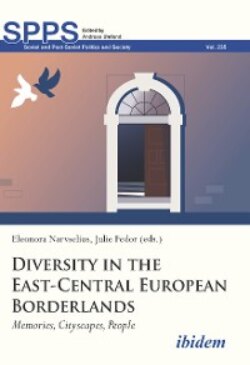Читать книгу Diversity in the East-Central European Borderlands - Группа авторов - Страница 26
На сайте Литреса книга снята с продажи.
L’viv in Post-Soviet Ukraine
ОглавлениеThe General Plans of 1993 and 2008 included new ring roads, partly in tunnels, through the outer suburban zone, but leaving the central areas intact. Although Ukrainian culture and language dominate L’viv after independence in 1991, cultural and scientific contacts with Poland are increasing. There is a general understanding that the historical center of L’viv, since 1998 listed as a UNESCO World Heritage Site, must be preserved and relieved from car traffic. In fact, preserving buildings there means protecting the traces of the city’s earlier Polish and Jewish populations.
Several old wall texts have been found and earmarked for preservation. Memorial plaques have been erected, and a ghetto monument was unveiled in 1992.71 In 2011 an architecture competition was arranged concerning memorial sites at the Golden Rose synagogue, the former Jewish cemetery, and the Janowska camp. A museum in the Lonts’koho prison commemorates the Soviet repressions more than the German misdeeds at the same site. A museum called “Territory of Terror” has opened within the last ghetto area of 1943, also the site for “Transit Prison nr. 25” in Stalin’s time. Half a million people from Galicia and Bukovina passed through this prison before deportation eastwards in the years 1944–55. Among new memorials is a monument to the controversial OUN leader Stepan Bandera, completed with a colonnade in 2011.72
